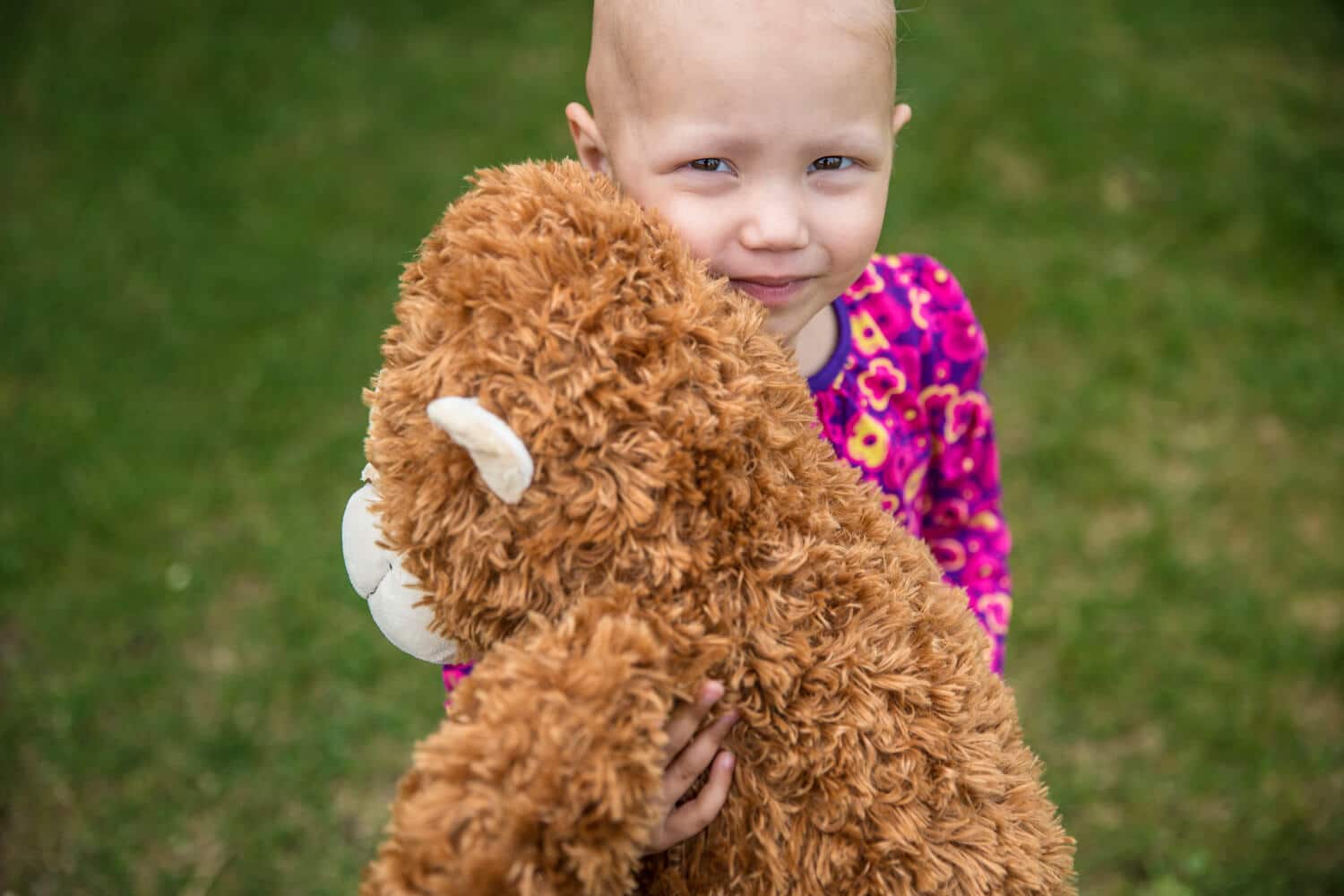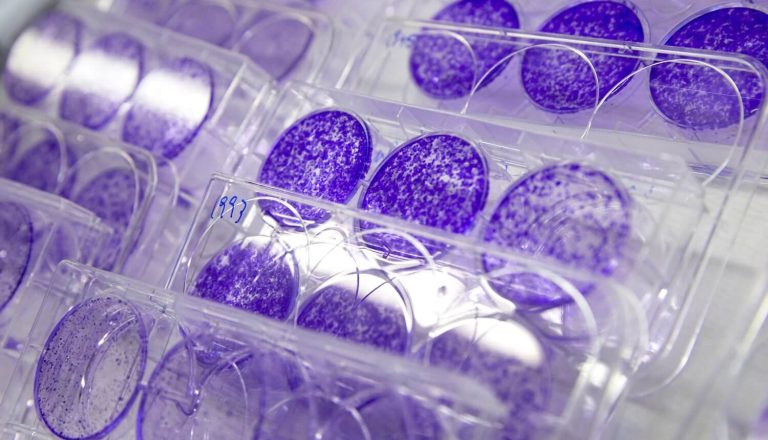Learn about
Complementary Therapies For Childhood Cancer Treatment

Topics on this page
- Types of Complementary Therapies
- Examples uses
- Finding a complimentary therapist
- Research
- Further information
Why do children get cancer?
Learn about the causes of childhood cancer and the research behind it.
Complementary therapies are thought to be used by up to a third of cancer sufferers. These therapies may be used alongside the conventional treatments such as chemotherapy, radiotherapy and surgery, not as an alternative.
Complementary therapies are generally used to help with the symptoms of disease and the side effects of treatment. Side effects such as nausea, vomiting, fatigue and pain are well known but depression and anxiety are also very common and complementary therapies can help reduce anxiety and promote relaxation.
Some cancer centres offer complementary therapies directly. Some patients will need to seek independent practitioners; in all cases it is advisable to seek advice from your child’s doctor. Some complementary therapies may actually interfere with conventional treatments.
Types of Complementary Therapies
There is a wide range of complementary therapies, and some of these categories overlap. They can be broadly categorised as follows:
- alternative medical systems, such as acupuncture, homeopathy and Chinese medicine
- complex natural products, such as botanicals, and green tea
- energy therapies, such as Qi Gong, Reiki, therapeutic touch and magnet therapy
- exercise therapies, such as Tai Chi, yoga, and dance therapy
- manipulative therapies, such as chiropractic, massage, osteopathy and reflexology
- mind therapies, such as aromatherapy, art therapy, cognitive behavioural therapy, imagery, mindfulness and meditation
- nutritional therapies, such as anti-oxidants, macrobiotics and vitamins
- spiritual therapies, such as prayer and healing
Example uses for Complementary Therapies
This involves using needles that stimulate anatomical points in the skin, causing energy to pass along paths in the body called meridians. This can help a person’s mental and physical health. The therapist needs formal training, regulated by the British Acupuncture Council. Acupuncture is NOT an effective treatment for cancer on its own, but it can relieve pain, nausea and vomiting caused by chemotherapy. It is generally considered safe but should be avoided in certain conditions, such as skin that has been radiated, infected skin, those with low platelets or on anti-coagulants.
Visit the British Acupuncture Council for further information
This involves delivering essential oils to the body, either by being applied to the skin, sprayed into the room, or inhaled. This can overlap with massage, healing touch and Reiki as these methods can also be used to deliver the oils. Again there is no evidence that aromatherapy alone can treat cancer but it has been studied for the treatment of stress and anxiety and to help nausea and pain.
Aromatherapy has very few side effects and is recognised as being safe but of course allergic reactions or irritation of the skin could occur. Children enjoy choosing the aromas, and can receive these while they are playing.
Visit the International Federation of Aromatherapists for further information
This is an alternative type of medicine based on the principle that a substance taken in small amounts will cure the same symptoms it causes if taken in large amounts. The substances are alcohol- or water-based solutions containing very small amounts of minerals or chemicals.
Homeopathy is performed by regulated practitioners, but cannot be used alone to treat cancer. It can however improve the quality of life and reduce fatigue. There is limited safety research but there are no published cases of serious adverse effects reported. Before using any homeopathy you must discuss this with your cancer specialist.
Imagery involves mental exercises designed to allow the mind to influence the health and wellbeing of the body. The patient imagines sights, sounds, smells, tastes, or other sensations to relax them into a daydream state of mind. Imagery can be used with standard medical treatment in people with cancer and may be particularly helpful for younger children, to help them relax during conventional treatment, or during their stay in hospital. Evidence suggests it may reduce some of the side effects of chemotherapy. It is considered safe, and can be taught by a trained therapist, then practised at home.
This involves pressing or rubbing the muscles and soft tissues of the body. There are several types of therapy but a qualified practitioner should have both training and experience, with certification showing the level of achievement.
Massage therapy is not effective as a sole treatment for cancer but can relieve anxiety, depression, pain and improve general well-being. It is considered safe when performed by a trained therapist, but can cause temporary side effects such as pain. The therapist will know to avoid massaging areas that have blood clots, infection, fractures, open wounds, low platelet counts or known tumour sites.
Mindfulness is a mind-body approach to wellbeing that can help change the way you think about experiences and reduce stress, anxiety and pain. Mindfulness is a way of paying attention to the present moment, using techniques like meditation, breathing and yoga. It helps a person become more aware of their thoughts and feelings so that instead of being overwhelmed by them, feel better able to manage them. This is more appropriate for teenagers and young adults rather than young children.
Natural products, such as herbs, vitamins and supplements are widely available, but there is no scientific evidence to support any particular supplement or diet. Good nutrition is very important and a dietician may be involved with patients who are unable to eat due to their cancer or experiencing side effects from treatment. Certain vitamins may even interfere with treatment so it is advised to avoid these altogether. Natural does not mean safe.
Reflexology is a non-intrusive complementary therapy, based on the theory that different points on the feet, lower leg, hands, face or ears correspond with different areas of the body. Reflexologists work holistically with their patients and work alongside conventional healthcare professionals to promote better health. Reflexology is a very easy therapy to receive. The therapist will use their hands to apply pressure to the feet, lower leg, hands, ears or face, depending on the type of reflexology chosen.
Benefits include feelings of relaxation, wellbeing and lifting mood. Side effects may include transient discomfort during the treatment, but generally the experience should be relaxing. The therapist will avoid skin that has been radiated, infected, or those with low platelets or on anti-coagulants.
Visit the Association of Reflexologists for further information
Reiki is Japanese for ‘universal life energy’ and is an energy-based therapy. It is based on the belief that a universal energy source supports the body’s own healing process. Practitioners access this energy allowing it to flow through the body to promote wellbeing. The therapist is trained, and places his or her hands over the patient until the therapist feels a flow of energy. The patient may feel a warmth, tingling, or a sensation of feeling relaxed and calm.
Reiki is not an effective treatment for cancer used alone, but used as a complementary therapy alongside conventional treatments it can be helpful. There are no known side effects.
The Sanskrit word yoga is translated as ‘union’. The practice of yoga helps to coordinate the breath, mind and body to encourage balance, both internally and externally and promote feelings of relaxation and ease. There are more than 100 types of yoga, but in the UK the most widely taught form is hatha yoga.
Yoga teaches postures and movements to stretch, strengthen and flex the body, to develop breath awareness, to relax and sometimes to meditate. Scientific evidence does not support it as an effective treatment for cancer but it can improve quality of life. There are certain medical contraindications, so a patient should always discuss its use with their oncologist.
If you would like to explore the use of complementary therapies for your child, it is strongly advised that you first have a discussion with their cancer specialist – and keep the specialist informed of any therapies you may subsequently use. Some therapies may be provided by the hospital. The links highlighted above will provide more background information on the more commonly used complementary therapies as well as information on how to find appropriately trained therapists.
Research
There is limited research into the benefits of complementary therapies in children, adolescents and young adults with cancer for a number of reasons. It is difficult to measure outcomes and the studies that have been done reveal that use is often concealed from the medical team. Hopefully future research will provide evidence based data to support the use of complementary therapies in the future. A 2005 review by a team in the United States looked at studies performed over the preceding decade. These studies found that complementary therapies are commonly used among children diagnosed with cancer. The reasons given include:
- Wanting to do whatever they could to contribute to their child’s health
- Help with symptom management
- Hopes of improving the immune system
- Hopes of improving the chance of a cure
The majority were not using complementary therapies due to any dissatisfaction with conventional treatment. An important, recurring finding was that doctors were often unaware of the children’s use of such therapies. Various reasons were given such as “it was not important for the doctor to know”, “the doctor would not understand”, and they “didn’t want to offend the doctor”. The use of these therapies should always be disclosed so that safety issues can be addressed. The doctor should also be able to provide evidence-based information on potentially helpful therapies that may be safely incorporated into the child’s care plan.
Further information
The following organisations can provide further information about complementary therapies:
The Complementary and Natural Healthcare Council
The British Complementary Medicine Association
The Federation of Holistic Therapists
The Institute of Complementary and Natural Medicine
Therapy Directory
